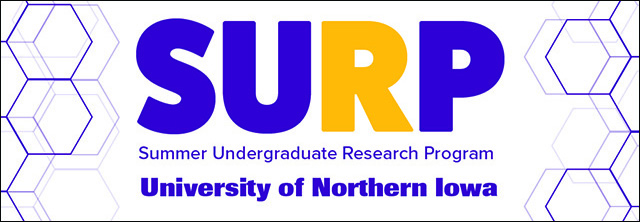
2021 Summer Undergraduate Research Program (SURP) Symposium
Location
Ballroom, Maucker Student Union, University of Northern Iowa
Presentation Type
Poster Presentation (UNI Access Only)
Document Type
poster
Keywords
DNA repair;
Abstract
The binding of RAD51 protein to single-stranded DNA is important to the process of homologous recombination (HR). Although HR is a very important DNA repair pathway, there remain gaps in our understanding about the physical and structural properties of this mechanism. Using Atomic Force Microscopy (AFM), the binding process was visualized giving greater insight about the process of HR. Before imaging the DNA/protein complex, the DNA and protein were first imaged by themselves, and then combined to create the nucleoprotein complex to image. The collected images will help create a better understanding of the physical and structural properties of HR.
Start Date
30-7-2021 11:30 AM
End Date
30-7-2021 1:15 PM
Event Host
Summer Undergraduate Research Program, University of Northern Iowa
Faculty Advisor
Justin P. Peters
Department
Department of Chemistry and Biochemistry
Copyright
©2021 Rose Perksen and Justin P. Peters
Creative Commons License

This work is licensed under a Creative Commons Attribution 4.0 International License.
File Format
application/pdf
Recommended Citation
Perksen, Rose and Peters, Justin P. Ph.D., "Visualizing Human RAD51 Protein Binding to Single-Stranded DNA Using Atomic Force Microscopy" (2021). Summer Undergraduate Research Program (SURP) Symposium. 20.
https://scholarworks.uni.edu/surp/2021/all/20
Visualizing Human RAD51 Protein Binding to Single-Stranded DNA Using Atomic Force Microscopy
Ballroom, Maucker Student Union, University of Northern Iowa
The binding of RAD51 protein to single-stranded DNA is important to the process of homologous recombination (HR). Although HR is a very important DNA repair pathway, there remain gaps in our understanding about the physical and structural properties of this mechanism. Using Atomic Force Microscopy (AFM), the binding process was visualized giving greater insight about the process of HR. Before imaging the DNA/protein complex, the DNA and protein were first imaged by themselves, and then combined to create the nucleoprotein complex to image. The collected images will help create a better understanding of the physical and structural properties of HR.


